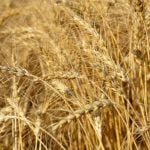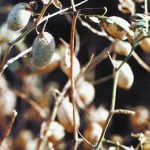Chicago | Reuters — Chicago Mercantile Exchange live cattle futures crept higher on Monday on expectations that U.S. supplies will continue to tighten, analysts said.
The country had 11.8 million cattle on feed for the slaughter market on Feb. 1, down from 11.9 million a month ago but up slightly from a year earlier, the U.S. Department of Agriculture said after trading ended on Friday.
U.S. producers placed 1.79 million cattle into feedlots in January, down 7.4 per cent from the previous year, the USDA said. Analysts had projected an 11.6 per cent drop, after ranchers slashed the U.S. herd to its smallest size since 1951 because drought reduced pasture land available for grazing.
Read Also

Brazil to reap record soy crop in 2025/2026, increase exports
Brazil’s Conab said the country will reap a record soybean crop of 177.6 million tons in the 2025/2026 harvest year, according to data released on Thursday.
“Cattle on feed supplies are expected to continue to tighten and will continue to work lower this year,” Steiner Consulting Group said. “The large drop expected in placements is likely still to come this year and will further fuel higher prices.”
CME April live cattle LCJ24 settled up 0.200 cent at 188.100 cents per pound.
Feeder cattle futures weakened in a setback from recent gains and as prices bounced for corn Cv1 used for livestock feed. CME April feeders FCJ24 fell 1.075 cents to 258.900 cents per pound, after rising earlier to their highest price since October.
The USDA said after trading ended on Monday that total pounds of U.S. beef in cold-storage facilities as of Jan. 31 were down one per cent from the previous month and down 11 per cent from last year. Frozen pork supplies were up 10 per cent from the previous month but down 10 per cent from last year.
In the pork market, CME April lean hogs LHJ24 settled down 0.925 cent at 86.275 cents per pound. June hogs LHM24 rose 0.475 cent to 99.850 cents and reached the highest price in nearly a year.
China, the world’s largest pork producer and consumer, had 40.67 million sows at the end of January, down 1.8 per cent month-on-month and down 6.9 per cent from the previous year, the Chinese government said.














